People
What I Buy and Why: Millennial Art Advisor Lawrence Van Hagen on How He Collects the Artists of His Generation
We caught up with the collector at his new home in London.
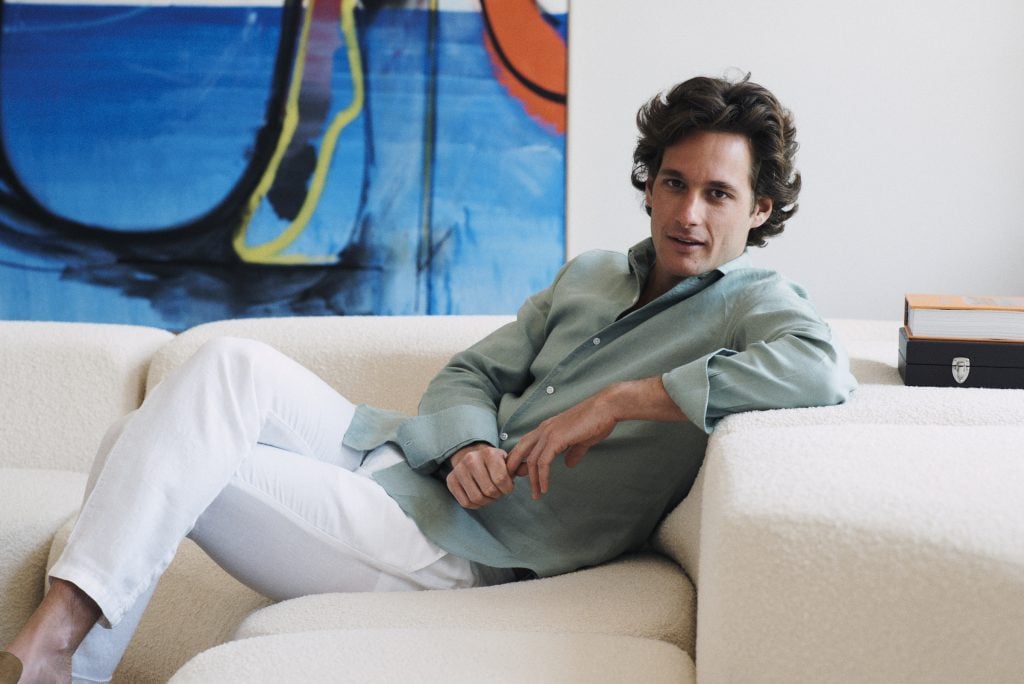
We caught up with the collector at his new home in London.

Naomi Rea

Lawrence Van Hagen is putting the finishing touches on his new home, a bright and airy apartment filled with art and design in London’s Cadogan Square. The 27-year-old collector is an art advisor by day, having founded LVH Art, which specializes in postwar, modern, and contemporary art.
Since 2016, he has found a successful sales format in curating a series of pop-up exhibitions, titled “What’s Up,” designed to raise the profiles of emerging artists by placing them in dialogue with more established names. So far, the shows have been mounted in five different countries, from France to South Korea.
The program reflects Van Hagen’s personal taste and collection, which includes emerging names from his generation, such as Issy Wood and Christina Quarles, as well as industry heavyweights like Gerhard Richter and Georg Baselitz.
We caught up with the collector at his new home in London to talk about the artwork he covets most, and the very delicate sculpture visitors can’t seem to keep their hands off.
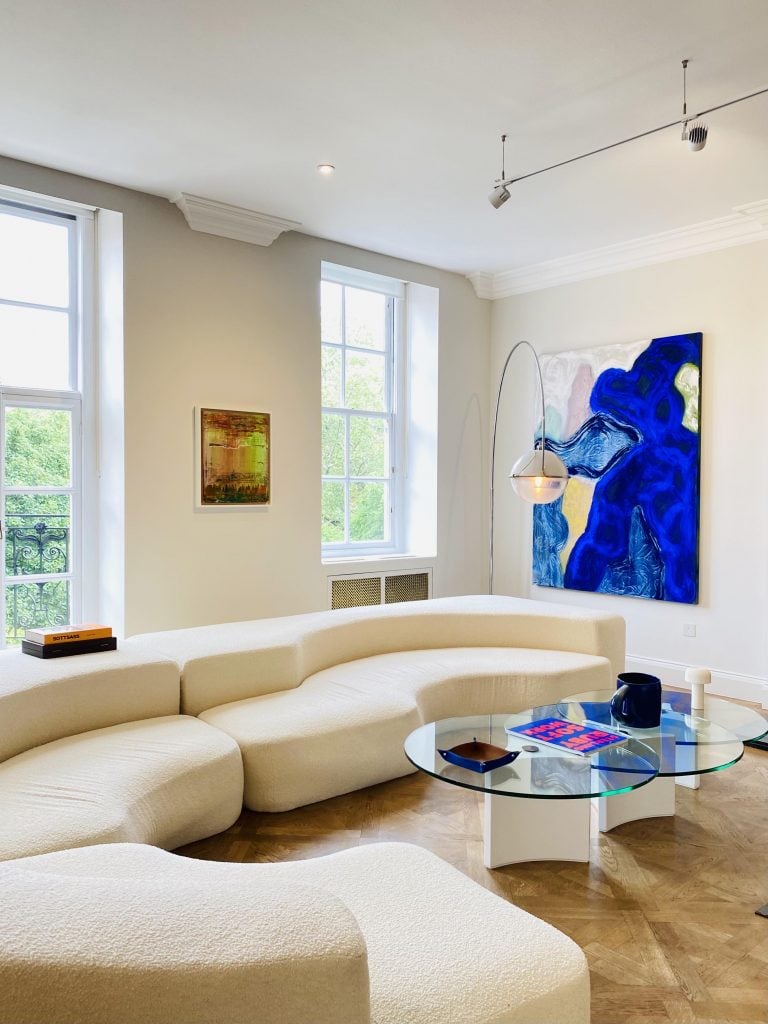
On the left, Gerhard Richter, Abstraktes Bild (2009). On the right, Donna Huanca, High Roze (2017). The sofa is by Ennio Chiggio, the lamp is Fabio Lenci for Guzzini and the table is from the 1970s. Courtesy of LVH Art.
What was your first purchase (and how much did you pay for it)?
I bought my first canvas by Donna Huanca for under £10,000 back in 2016. It is incredible to see all the career milestones she has accomplished since and how her practice is developing. I grew up in an art collector family, but this was the first large piece of art that I purchased myself, hence I feel particularly attached to it. I could not live without it! It has moved with me from home to home.
I first became acquainted with Huanca in 2015 and I immediately fell in love with her practice. There is a very mystical element to her canvases and her performances: the intensity of the colors, the textures, and shapes. Since then, I have been collecting her works and placing them into my clients’ collections. She is one of the most impressive artists of our generation and I am confident that she will continue to push barriers and over-achieve. Her exhibitions at the Belvedere Museum in Vienna and the Marciano Art Foundation in L.A. were groundbreaking.
What was your most recent purchase?
A large-scale canvas by Daniel Richter. I love the intensity of the colors against the presence of fragmented bodies—it’s beautifully disquieting. His recent works tread a path between figuration and abstraction that creates these surreal landscapes charged with symbolism and art-historical references. However, they evade a single interpretation, which makes his work even more interesting.
Coming from a German family has made me grow a particular appreciation toward German artists and I believe Daniel Richter is one of the most important raising artists in German painting. He was born in Eutin and now lives and works in Berlin. In the early ’90s he studied in Hamburg under Werner Büttner—one of the protagonists, along with Martin Kippenberger, of the revival of expressive trends in painting during the 1980s—and later worked as assistant to Albert Oehlen. These artistic influences are obvious in his work, but he has managed to create his own style and vocabulary, and I find it fascinating.
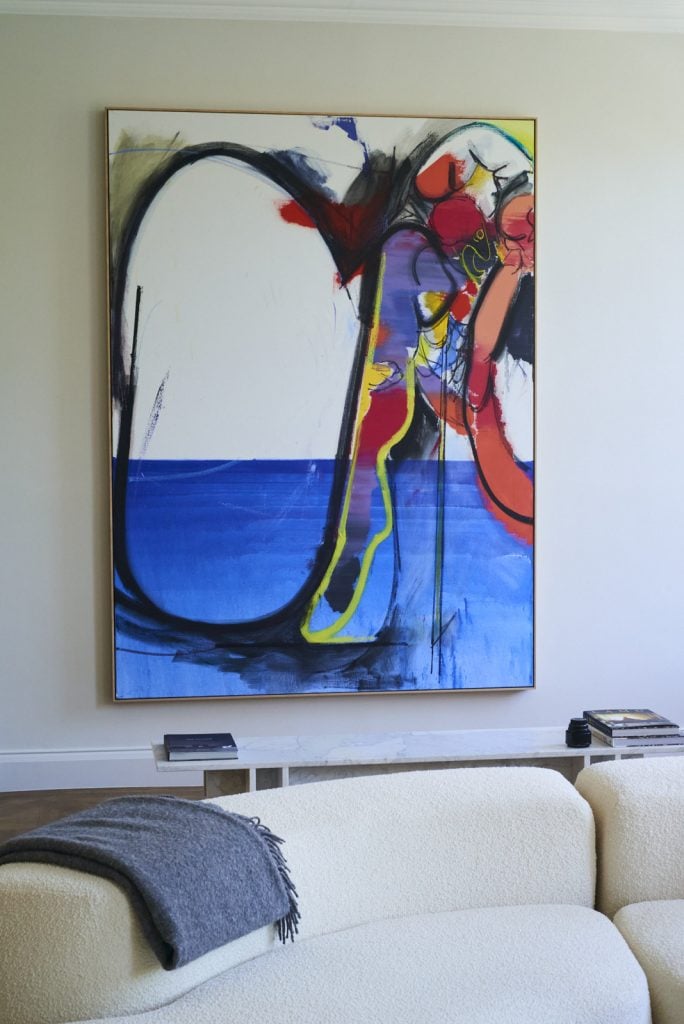
Daniel Richter, Haparanda (Tyska II) 2020. Image by Edd Horder. Courtesy of LVH Art.
Which works or artists are you hoping to add to your collection this year?
The first artist on my list is Martha Jungwirth. I have already placed a few in my clients’ collections and this year I would love to buy one myself. Her process is a direct rhythm involving the body, with finger marks and even scratches remaining as a visceral record of her presence in the work. It’s charged with passion and soul, and is really moving and emotional.
Another artist in my list is Loie Hollowell. I bought one of her beautiful works on paper some years ago and I would love to get my hands on one of her canvases soon. I love how she explores the feminine body in such a corporeal way: the textures, the forms, the colors, the three-dimensionality of the canvases. Her most recent body of work is breathtaking.
What is the most expensive work of art that you own?
A stunning “Abstraktes Bild” by Gerhard Richter. I am very happy with the fact that not only this piece is the most expensive one in my collection, but it is also the most important and historically relevant. Richter is widely regarded as one of the most important contemporary artists in the world and he is probably the greatest living European artist. I am very proud and humbled to own this painting and to be a gatekeeper of his work, which is part of the most important museums and art collections worldwide.
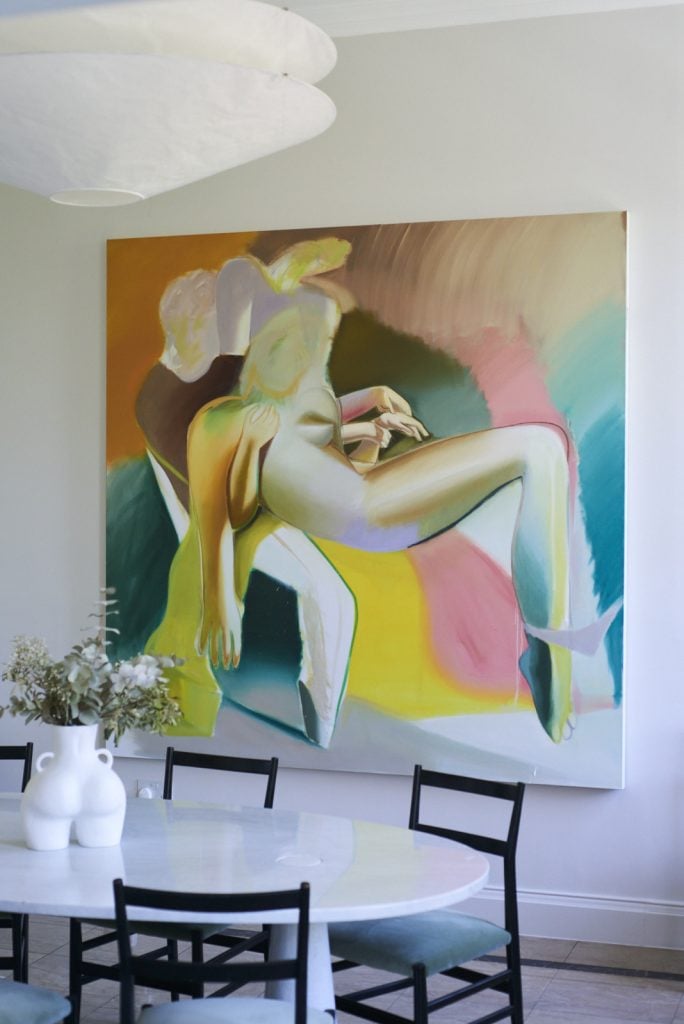
In the dining room, a large-scale canvas by Katherina Olschbaur meets a “Love Handles” by Anissa Kermiche, table by Angelo Mangiarotti and chairs by Gio Ponti. Lamp by Ingo Maurer.
Where do you buy art most frequently?
Artist studios when possible, otherwise galleries and fairs. Art fairs can be a bit overwhelming, but I always find something I love, or something I had had an eye on for a while. I also enjoy buying from galleries, but to me the greatest joy of art collecting is to get to know the artist on a personal level and be able to buy directly from his or her studio.
Is there a work you regret purchasing?
Not really. I always say “buy what you love.” And that has always been my premise. Of course there are works I like better than others, or works I have which haven’t really appreciated much in value, but that is not something that matters when you buy out of passion.
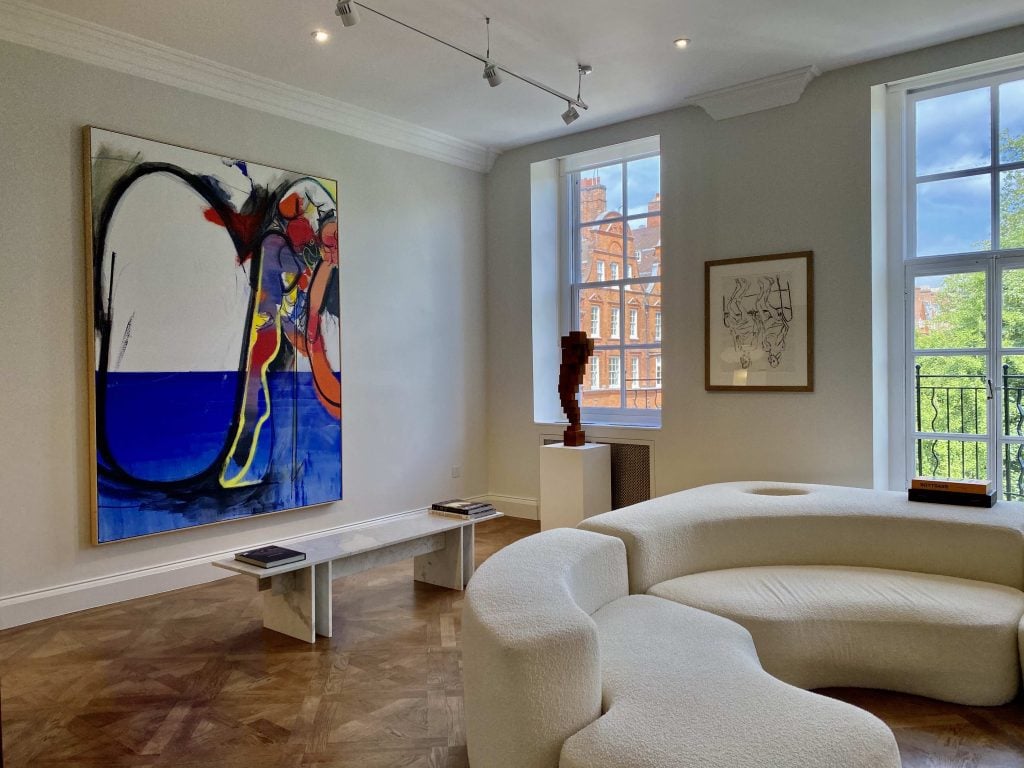
Left to right: Daniel Richter, Haparanda (Tyska II) (2020). Small Spall 2 IV (2016). Georg Baselitz, Ohne Titel (Untitled) (2019). Courtesy of LVH Art.
What work do you have hanging above your sofa? What about in your bathroom?
In the living room above the sofa I have works by Gerhard Richter and Georg Baselitz. The dialogue between the two is remarkable. Both being post-war German artists it creates a narrative that is fueled by the history of the 20th century, and it goes beyond beauty, it is eternal and transcendental.
In the TV room I placed a Sterne (Stars) photograph by Thomas Ruff from 2012 and above the bath tub I have a photograph by Alex Prager from 2010. They both are very important and interesting photographers, the former a disciple of Bernd and Hilla Becher, the latter a disciple of Cindy Sherman.
What is the most impractical work of art you own?
The most delicate sculpture by Kelly Akashi that everyone seems to want to touch. I love this sculpture. It’s funny because Akashi is known for creating sculptures and installations that emphasize the reciprocity of touch. I think it is safe to say that her work really lives up to these assertions!
My sculpture is as fragile as it is beautiful, it’s a bronze cast of two interwoven hands, capturing a momentary gesture into perpetual existence.

Left to right: Antony Gormley, Small Spall 2 IV (2016). Georg Baselitz, Ohne Titel (Untitled) (2019). Gerhard Richter, Abstraktes Bild 908-9 (2009). Courtesy of LVH Art.
What work do you wish you had bought when you had the chance?
A hero painting by Vojtech Kovarik and another Lenz Geerk. Kovarik is a young artist from the Czech Republic who paints figuratively, depicting mythological heroes that challenge assumptions around sexuality and gender. His vividly colored compositions result in impactful paintings that evoke the strength of sculpture, making the characters in his paintings seem even more herculean. Conversely, his stereotypically hyper-masculine subjects display postures evoking fragility and introspection.
Geerk is another artist I love. I own one of his works but I will always regret not buying a second one when I had the chance. His paintings depict people at the threshold of excitement, creating psychologically charged paintings that draw out the hidden emotions of the human psyche.
If you could steal one work of art without getting caught, what would it be?
A Cy Twombly “Bacchus” painting. In the 1950s, Twombly wrote that the act of painting could come out of “one ecstatic impulse,” and I find that these paintings convey a similar intensity: the energy of an unbroken movement across the large canvases. Titled after the Roman god of wine, the red color of the Bacchus paintings is evocative of both wine and blood, encompassing both the sensual pleasure and violent debauchery associated with the god.